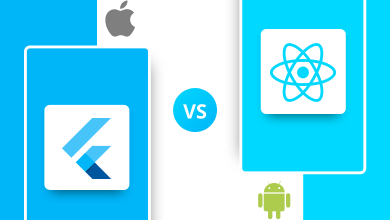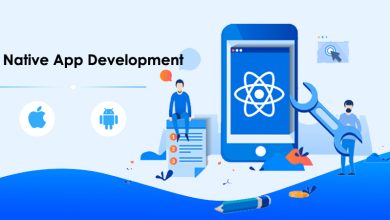Fitness App Development Trends to Watch in 2022

What’s common between Peloton, Nike Training Club, and Fitbit?
All three are fitness apps that have seen a tremendous growth in recent years.
With the global fitness app market projected to be worth $27.8 billion by 2025 and the number of fitness app users reached 378.7 million across the world in 2021, there’s no doubt that fitness apps are here to stay.
If you’re a fitness app development company or are planning to develop a fitness app, it’s important to stay up-to-date with the latest trends in the industry.
In this blog post, we’ll share with you the top 5 fitness app development trends that you should watch out for in 2022:
Latest Technology Trends for Fitness App Development
Wearable Technology
Fitness tracking app, fitness tracker, fitness app, fitness band, fitness watch, fitness activity tracker, fitness monitor, fitness gadget and more. Wearable fitness technology has been on the rise in recent years, with more and more people using fitness tracking apps and devices to monitor their fitness progress.
There are a number of reasons why wearable fitness technology has become so popular in recent years. First, fitness tracking apps and devices make it easy to track your fitness progress over time. This can be helpful in keeping you motivated to stay active and reach your fitness goals.
Second, fitness tracking apps and devices can provide you with valuable feedback about your fitness activity. This feedback can help you identify areas where you need to improve your fitness routine, and make necessary changes to help you reach your fitness goals.
Third, fitness tracking apps and devices can help you connect with other people who are interested in fitness. This can be a great way to find motivation and support from others who are working towards similar fitness goals.
Artificial Intelligence and Machine Learning
Artificial Intelligence (AI) and Machine Learning (ML) are two of the hottest trends in fitness app development. But what are they and how can they help you create a better fitness app?
AI and ML are both terms for ways of making computers smarter. AI is the more general term and includes a range of different techniques, while ML is a more specific subfield of AI that deals with teaching computers to learn from data.
So how can AI and ML be used in fitness app development? Well, they can be used to create apps that are more personalized and tailored to the user.
For example if you have a fitness app that tracks the user’s fitness data, AI and ML can be us to analyze that data and make recommendations on what the user should do next, based on their fitness goals.
AI and ML can also be used to create more engaging and interactive fitness apps. For example, you could use AI to develop a fitness app that can have a conversation with the user, ask them questions about their fitness goals, and give them personalized advice.
In short, AI and ML can be used to create fitness apps that are more personalized, interactive, and engaging. And that’s why they’re the future of fitness app development.
If you have an idea of making fitness app, look for a fitness app development company that can help you take advantage of AI and ML and create the future-centric, customer-centric app that is capable of meeting the evolving demands.
Virtual and Augmented Reality
Fitness apps are becoming increasingly popular as people look for ways to lead healthier lifestyles. However, traditional fitness apps can only do so much to motivate users. This is where virtual and augmented reality comes in.
Virtual and augmented reality can provide a more immersive and engaging experience that can help people stick to their fitness goals. Fitness app developers can use virtual reality to create realistic environments that users can explore. This can make working out more fun and motivating.
Augmented reality can be used to superimpose virtual objects onto the real world. This can be used to create interactive fitness experiences. For example, an augmented reality fitness app could allow users to track their progress by superimposing their results onto their body. Fitness app developers can also use augmented reality to create virtual trainers that can provide guidance and motivation.
Virtual and augmented reality are still emerging technologies, but they hold a lot of promise for fitness app development. Fitness app developers who are looking to create more immersive and engaging experiences should consider incorporating these technologies into their apps.
Geolocation and Social Sharing
Geolocation and social sharing are becoming increasingly popular features of fitness tracking apps. This is because they offer a number of benefits that can be extremely useful for both app developers and users.
Some of the main benefits of using geolocation and social sharing in fitness apps include:
Increased Engagement: Geolocation and social sharing features can help to increase engagement levels by making it easier for users to connect with friends and family members who also use the app. This can make tracking progress and sharing results much more enjoyable and motivating.
Improved accuracy: Geolocation features can also help to improve the accuracy of tracking data. This is because the app can use the GPS data to more accurately map out the user’s routes and track their distance travelled.
Enhanced features: Social sharing features can also add an extra layer of functionality to fitness apps. For example, some apps now allow users to post their workout results and progress photos directly to social media. This can help to create a sense of community and encourage others to start using the app.
Overall, it is clear that there are many benefits to using geolocation and social sharing features in fitness apps. These features can help to improve engagement, accuracy, and functionality. As such, they are likely to become increasingly popular in the future.
Streaming Services for fitness app
As the fitness industry continues to grow, so does the demand for innovative fitness apps. And one of the hottest trends in fitness app development is streaming services.
Streaming services allow users to access workout content on demand, without having to download or install anything. This is especially convenient for users who don’t have a lot of storage space on their devices, or who want to be able to access their content from anywhere.
There are a few different streaming services available for fitness apps, but the most popular is probably Peloton. Peloton offers users a wide variety of workout content, including classes, individual workouts, and even challenges. And best of all, it’s available on a variety of devices, so you can workout whether you’re at home or on the go.
If you’re looking for a fitness app development solution that stands out from the crowd, streaming services are definitely worth considering. They provide a convenient, user-friendly way for users to access workout content, and they’re sure to be a hit with users who are looking for a more flexible fitness solution.
Wrapping up
As the fitness app market continues to grow, it’s important to stay ahead of the competition by integrating the latest features and technologies. By doing so, you’ll be able to provide your users with a superior experience that keeps them coming back for more.
If you’re looking for a fitness app development company that can help you stay ahead of the curve, contact an experts team that is always keeping up with the latest trends and technologies so that they can provide you with the best possible solutions.





